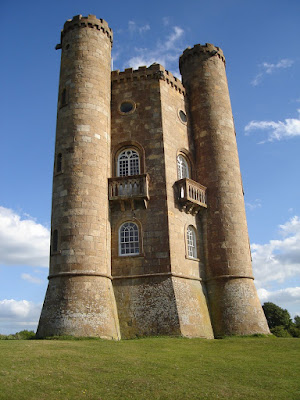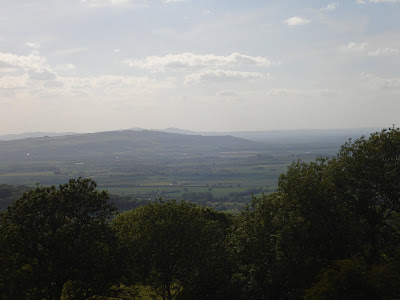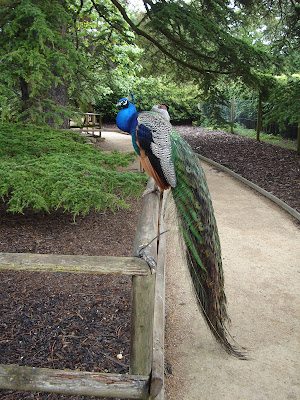We had been invited to Bruntingthorpe by two of their volunteer aircraft engineers when they visited our Nimrod at the Manchester Runway Visitor Park to exchange a faulty no.3 starter motor off the Bruntingthorpe Nimrod for the one on our aeroplane. We were happy to do this swap as unfortunately, our Nimrod’s engines will not run again so we won’t need a working starter motor.
Arriving at Bruntingthorpe at about 08:30am, before the crowds arrived, we were invited aboard their de Havilland Comet 'Canopus', which had been the last ever flying Comet. Unsurprisingly, Canopus’s flightdeck is similar to that of our Nimrod at Manchester, since the Nimrod is based on the Comet 4. We also had a good look around the only aeroplane that looks as though it might have been designed by Jules Verne; the Handley-Page Victor cold war bomber.
 Bruntingthorpe's Handley-Page Victor cold war bomber
Bruntingthorpe's Handley-Page Victor cold war bomber 'Canopus', a de Havilland Comet 4C, and the last Comet to fly
'Canopus', a de Havilland Comet 4C, and the last Comet to fly Canopus's flight deck; not dissimilar to the Nimrod, unsurprisingly
Canopus's flight deck; not dissimilar to the Nimrod, unsurprisingly The Nimrod; same as ours at the Runway Visitor Park except this one can still move under its own power
The Nimrod; same as ours at the Runway Visitor Park except this one can still move under its own power The ex-Royal Aircraft Establishment English Electric Canberra. Engine start uses cartridges (£100 each!); when the start button is pressed, there is a loud 'whizzing' sound and an arc of thick black smoke from atop the nacelle as the cartridge burns, spinning a turbine which is geared to the engine, rotating it to 'light-up' speed.
The ex-Royal Aircraft Establishment English Electric Canberra. Engine start uses cartridges (£100 each!); when the start button is pressed, there is a loud 'whizzing' sound and an arc of thick black smoke from atop the nacelle as the cartridge burns, spinning a turbine which is geared to the engine, rotating it to 'light-up' speed. One of three resident 'working' Blackburn Buccaneers at the museum
One of three resident 'working' Blackburn Buccaneers at the museum There was some flying; aircraft passing by gave us a fly-by, including this dH Venom, which was accompanied by a Jet Provost
There was some flying; aircraft passing by gave us a fly-by, including this dH Venom, which was accompanied by a Jet Provost .....And one of a pair of Sea Kings who transited through the overhead.
.....And one of a pair of Sea Kings who transited through the overhead. The English Electric 'Lightning' lights its re-heats... Wow! It's literally painful for a second or so as they kick in, and certainly cleared any ear-wax the spectators might be suffering! It set off a cacophony of car alarms among the spectators' cars (the Nimrod also managed this!). My ears' finer frequency response is knackered by decades of unsilenced Gipsy Major blattering in our Chipmunk so further ear damage not a consideration today for me!
The English Electric 'Lightning' lights its re-heats... Wow! It's literally painful for a second or so as they kick in, and certainly cleared any ear-wax the spectators might be suffering! It set off a cacophony of car alarms among the spectators' cars (the Nimrod also managed this!). My ears' finer frequency response is knackered by decades of unsilenced Gipsy Major blattering in our Chipmunk so further ear damage not a consideration today for me!The show began with the ex-Royal Aircraft Establishment English Electric Canberra in its blue, white and red colour scheme. Engine start uses cartridges which cost £100 each! When the start button is pressed there is a loud 'whizzing' sound and thick black smoke arcs from atop the nacelle as the cartridge burns, spinning a turbine which is geared to the engine, rotating it to 'light-up' speed.
The aeroplane powered off down the two-mile runway, bellowing angrily at the Leicestershire countryside. But instead of easing back the stick allowing the beast, pulsating with energy and potential, to soar up into its natural element, the throttles were closed after a few seconds and amid the dying whine of the engines the aeroplane was braked to a standstill on the runway. I wonder if it was only me who found this unconsummated dash a tad frustrating?
About ten or so historic jets from single-seat fighters to four-engined bombers made the same short dash throughout the afternoon, some of them several times. But the highlight of the show, and the display of sheer energy that made the day worthwhile for me, was the amazing English Electric 'Lightning'. Its two reheated Rolls Royce Avon engines set off a cacophony of car alarms among the spectators' cars as it powered down the runway, though it has to be said that the Nimrod also managed that.
The Lightning's engine start uses 'Avpin' (Iso Propyl Nitrate) to spin up the engine start turbine. It sounds like a blast of compressed air as it burns, followed by the building whine of the no.1 Rolls Royce Avon engine. Then it's repeated for no.2. With two enormous engines and a minimal single-seat airframe, not for nothing was this aeroplane known by RAF aircrew as 'The Frightening'. This one had its wheels chocked while it ran both engines up to deafening full 'dry' power for at least a minute. The nosewheel strut compressed fully under the phenomenal thrust of the two Avons and the sound approached the pain threshold as the pilot nudged the throttles up. The circular intake on the nose turning white with vapour around the centre 'bullet' fairing as the two engines sucked air at such a rate that the pressure reduction through the intake caused water vapour to condense out of the air.
Some spectators wore ear defenders, surely missing the entire point of this event which was all about glorying in the sheer anti-social gut-wrenching noise of these old jets. Mind you, my ears have suffered decades of unsilenced Gipsy Major blattering in our de Havilland Chipmunk so further ear damage was not such a consideration for me.
The Lightning’s power was reduced to idle, the chocks removed, and the power brought on again against the brakes, once again compressing the nose strut as the aeroplane bucked and rocked behind its battering wall of sound. The brakes were released and it leaped forward as full power was applied (the brakes won't hold full power - you need the wheels chocked or it'll just skid along, wheels locked). The sound out of the tailpipes was brutally physical, like tearing cloth but a million times louder. The ground shook, and my chest was pummelled.
But that was nothing to what came next. The re-heats were engaged as the pilot pushed the throttles past their 'full dry power' position, and forwards to the stop. Fuel poured into the tailpipes where it ignited with a loud 'pop' and the sound intensity changed note, deepening and increasing to the point of ear pain, too loud now to be perceived as sound; it was a violent brutal thumping of the air, ourselves and everything around. Thankfully it was short lived at this intensity as the aeroplane was fast disappearing down the runway, two bright orange flares, one above the other, in the tailpipes.
In the good old days when Lightnings were allowed to fly, that incredible display of raw power expressed as sound was followed by the aeroplane lifting off to just above the runway, flying level as the spindly undercarriage was retracted and the speed built up to about 300 knots, then the Lightning would rotate up to the vertical and climb straight up like a Saturn Five space rocket, reaching 60,000 feet (11 miles high) in about 2 minutes!
But not today. Such sights and sounds are denied us now and this Lightning simply throttled back from its full re-heat dash, and braked to a halt with the dieing whine of the Avons spooling down. Nonetheless, for me it was the highlight of today's show and it took me back to airshows of the 60s and 70s when that amazing vertical climb was always demonstrated - it was the Lightning's party trick as no other aeroplane had the power to weight ratio to achieve it.
Our ears were singing - I half expected them to be bleeding! It certainly clears any stubborn ear-wax!
It had been a strange day – an airshow with no flying. Bruntingthorpe show is a unique if somewhat frustrating event and I’m glad I experienced it. But next time, I think I’ll head for a show where the participants can leave the ground and revel in that three-dimensional freedom that is the epitome of flight.








































